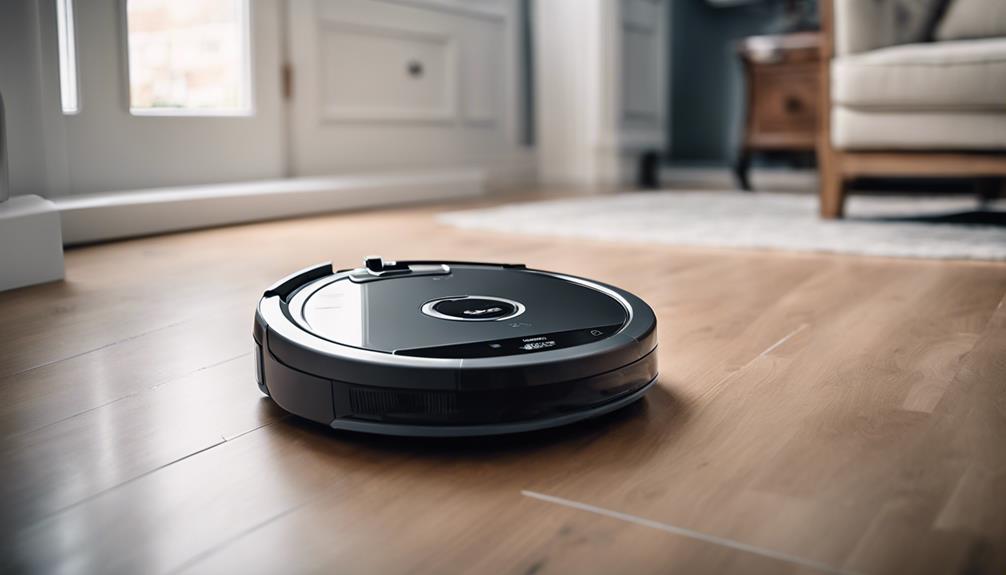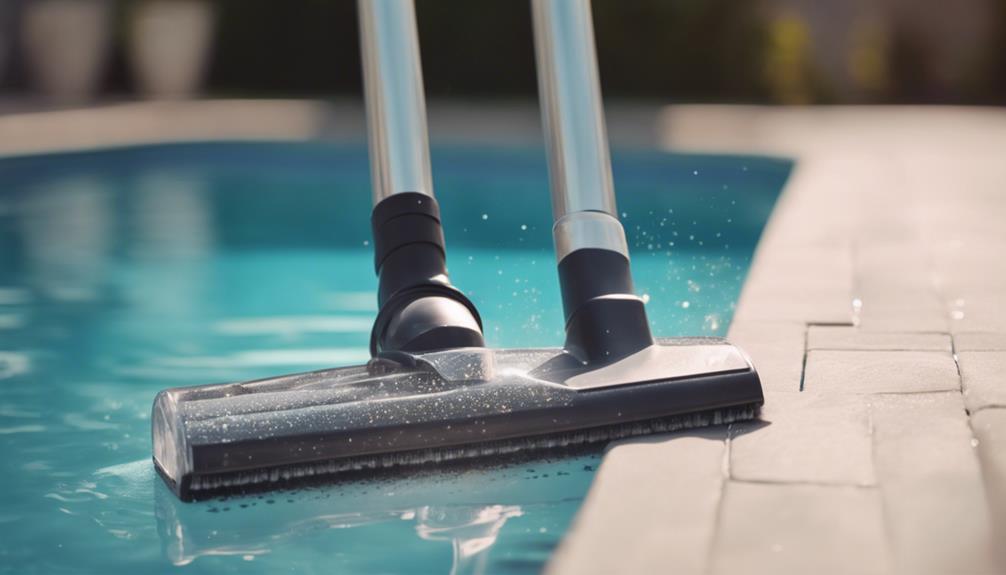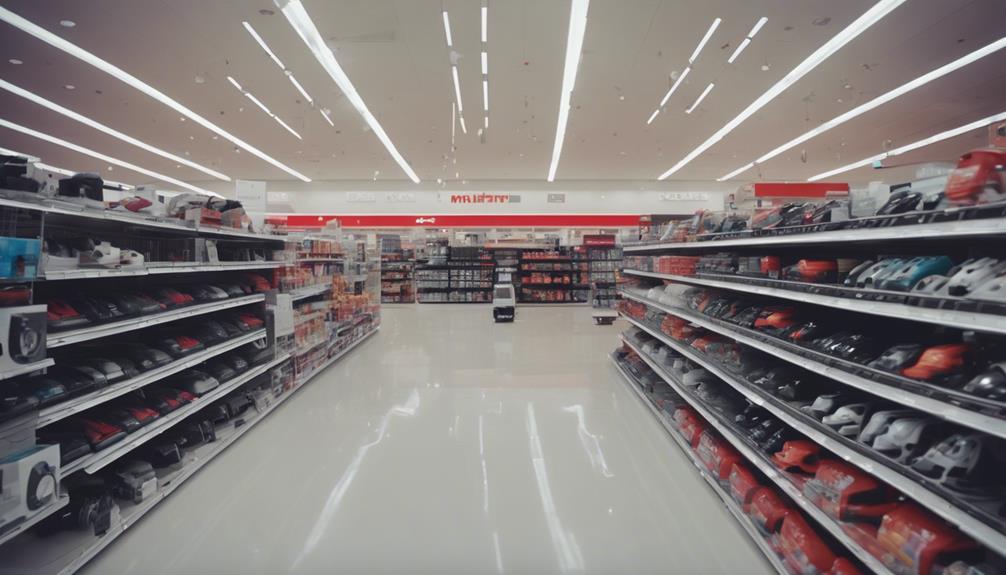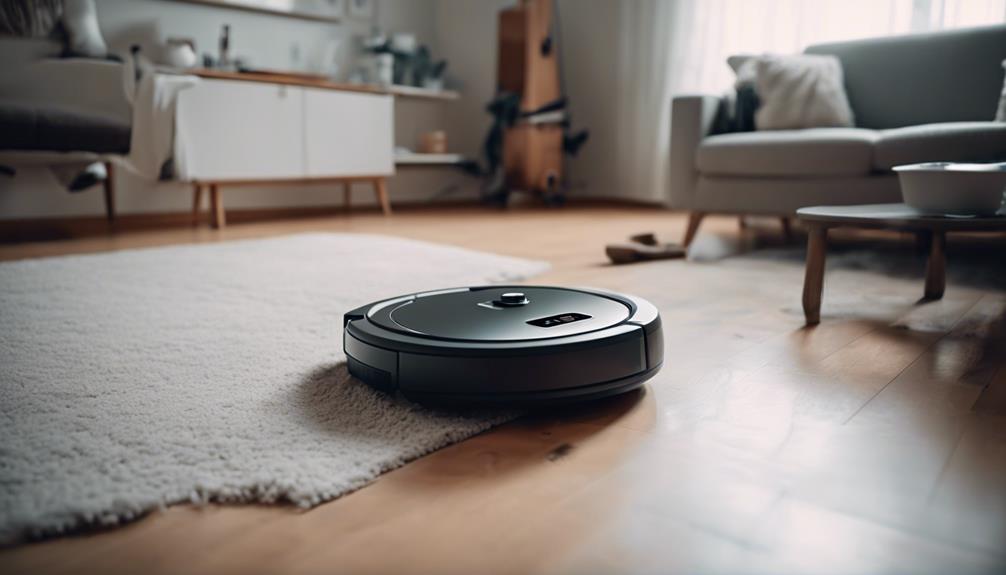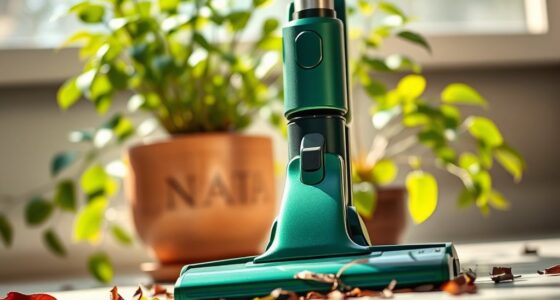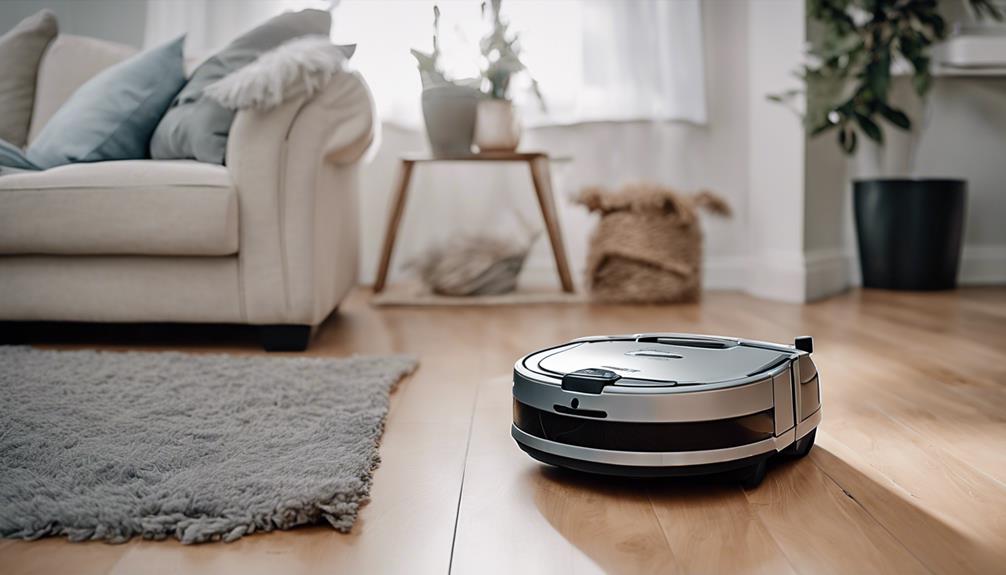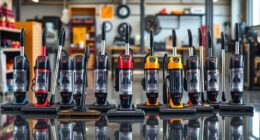When buying a robot vacuum cleaner, it is important to consider the type of flooring for optimal performance. Choose a model that is best suited for either carpets or hard floors, depending on your needs. Look for models with higher suction power or mopping capabilities as needed. Make sure to select a robot vacuum with advanced mapping and obstacle avoidance features, such as LiDAR-based navigation. Additionally, evaluate the battery life to ensure longer runtimes by choosing models with lithium-ion batteries and rechargeable features. Consider connectivity options like Wi-Fi control and voice assistant integration for added convenience. Lastly, look for advanced features such as self-emptying capabilities and AI technology to guarantee efficient cleaning.
Key Takeaways
- Consider flooring type for suitable suction power and mopping capabilities.
- Prioritize mapping and obstacle avoidance features for efficient cleaning.
- Evaluate battery life for longer runtime, recharge options, and performance.
- Look for advanced features like self-emptying, 2-in-1 models, and AI technology.
- Opt for smart connectivity options such as app control and voice assistant integration.
Flooring Type Considerations
When selecting a robot vacuum cleaner, consider the type of flooring in your home to guarantee top performance. For carpeted surfaces, opt for models with higher suction power like the Roborock S7 MaxV Ultra or the DreameBot D10 Plus to guarantee deep cleaning. These vacuums are designed to effectively lift dirt and debris from carpets, providing a thorough clean. On the other hand, if you have hard floors, consider robot vacuums with mopping capabilities to maintain cleanliness. Look for specialized brushes or rollers that cater to specific floor types for best cleaning results. Additionally, seek out models with customizable settings to adjust cleaning modes based on the flooring type in different areas of your home. By selecting a robot vacuum that suits your flooring type and offers versatile features, you can ensure efficient and effective cleaning throughout your living space.
Mapping and Obstacle Avoidance Capabilities
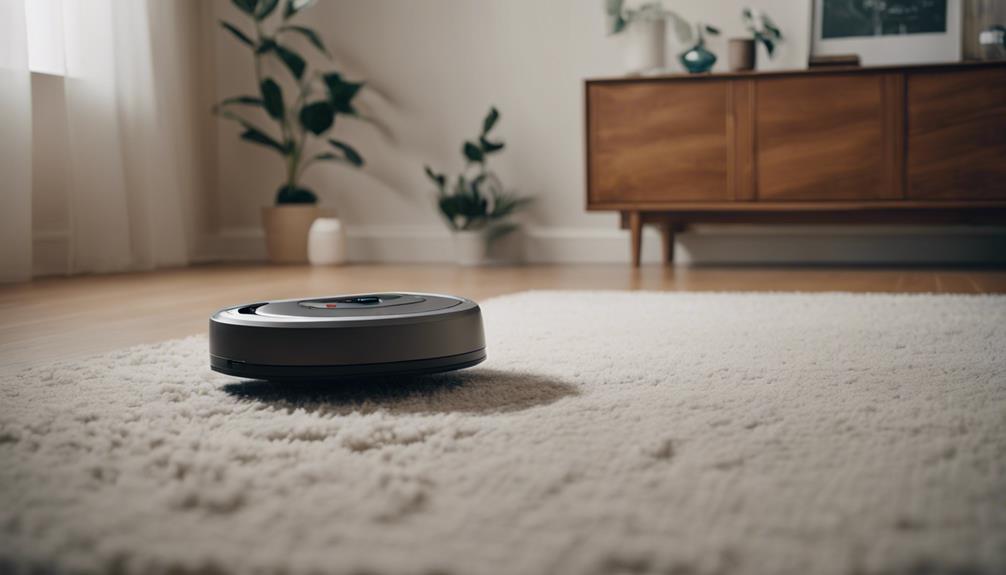
Consider the mapping and obstacle avoidance capabilities of robot vacuum cleaners when choosing the right model for your home. These features play an essential role in guaranteeing your robot vacuum navigates efficiently while avoiding collisions with furniture and other obstacles. Robot vacuums utilize different types of mapping technology such as LiDAR-based, camera-based, and sensor-based navigation to create efficient cleaning paths. Advanced models like ECOVACS incorporate AIVI 3D and TrueMapping technologies for precise room mapping and obstacle detection. Digital mapping capabilities enable these devices to generate detailed floor plans, optimizing cleaning routes for thorough coverage. Efficient obstacle avoidance not only ensures smooth operation but also protects both the robot vacuum and your household items from potential damage. When considering a robot vacuum, look for one with advanced mapping and obstacle avoidance features to enhance its cleaning performance in your home.
Battery Life Assessment
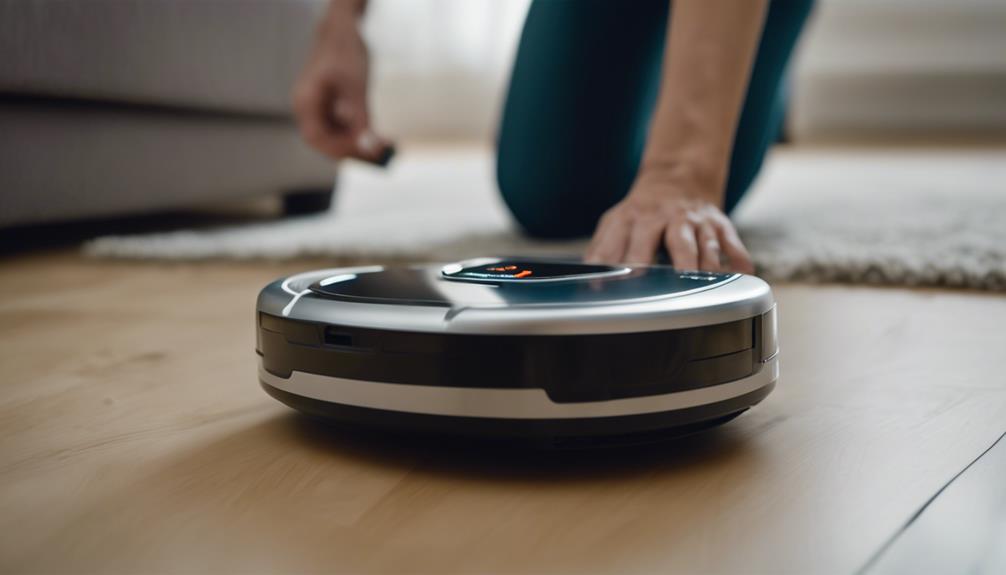
Assess the battery life of robot vacuum cleaners based on their average runtime and suitability for your cleaning needs. Look for models with lithium-ion batteries for optimal performance and durability. Consider robot vacuums equipped with recharge and resume features, enabling them to recharge during cleaning sessions and continue where they left off. This capability ensures uninterrupted cleaning sessions, especially vital for larger homes or areas requiring extended cleaning. Longer battery life is essential for efficient cleaning, particularly in homes with multiple rooms or larger floor spaces. Prioritizing a robot vacuum with extended battery life can lead to enhanced coverage and more thorough cleaning sessions. By choosing a model with a longer battery life and suitable features, you can ensure that your robot vacuum operates efficiently and effectively, meeting your cleaning requirements with peak performance.
Connectivity Options Overview
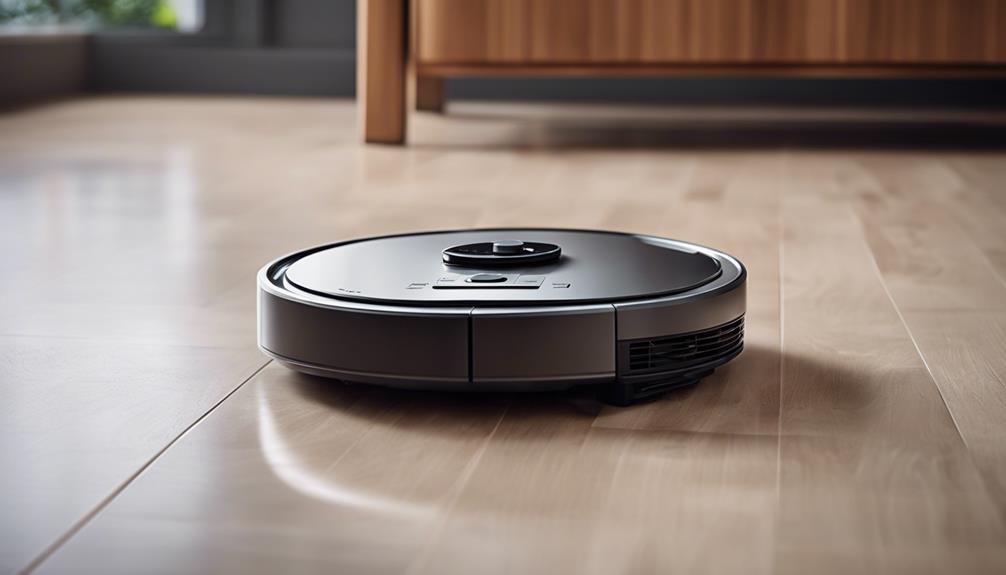
Robot vacuums offer a range of connectivity options, enhancing convenience and control over your cleaning routine. With Wi-Fi capabilities, you can remotely control and schedule cleaning sessions, making it easy to maintain a tidy home even when you're away. Smart home compatibility allows integration with voice assistants like Alexa and Google Assistant, enabling hands-free operation for a thorough cleaning experience. Some models come equipped with companion apps that provide detailed cleaning reports, maintenance alerts, and user-friendly controls, giving you a complete overview of your robot vacuum's performance. Connectivity features like Bluetooth and infrared sensors facilitate smooth communication between the robot vacuum and its docking station, ensuring efficient recharging after cleaning sessions. For those seeking advanced models, multi-floor mapping capabilities are available, allowing for customized cleaning schedules and room-specific settings tailored to your home's layout. These connectivity options play an essential role in optimizing the functionality of modern robot vacuum cleaners.
Advanced Features Evaluation
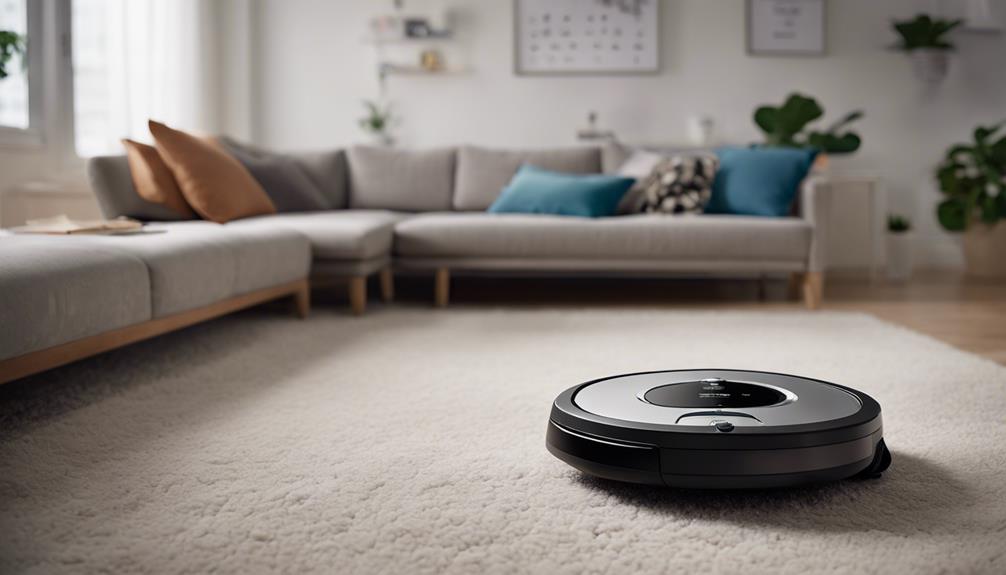
Exploring advanced features in robot vacuum cleaners can enhance your cleaning efficiency and overall experience. When evaluating robot vacuums, consider the following:
- Self-emptying capabilities: Look for models that can empty their dustbins automatically, allowing for uninterrupted cleaning sessions.
- 2-in-1 models: Opt for vacuums with both vacuuming and mopping functions for versatile cleaning options in your home.
- Advanced navigation technology: Choose robots equipped with advanced navigation systems for efficient room mapping, ensuring they cover all areas effectively.
- AI technology: Select models with artificial intelligence capabilities that can differentiate between carpet and hardwood floors, providing excellent cleaning for different surfaces.
Moreover, high suction power is essential for thorough cleaning, particularly on carpets. These advanced features work together to provide you with a robot vacuum that offers efficient cleaning, adapts to different surfaces, and effectively navigates your home for excellent results.
Real-World Performance Testing
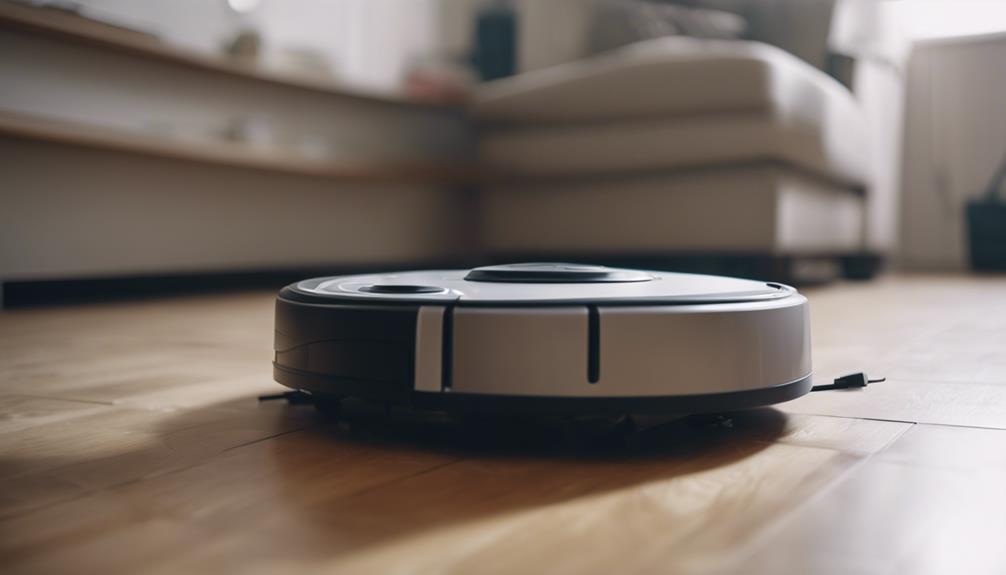
When evaluating a robot vacuum cleaner's real-world performance, you'll look at its cleaning effectiveness, battery life, and navigation system. These three key points give you a thorough understanding of how well the robot vacuum can handle different surfaces, how long it can operate, and how efficiently it navigates your home. By focusing on these aspects during testing, you can make an informed decision about which robot vacuum cleaner best suits your cleaning needs.
Cleaning Effectiveness Analysis
Evaluating a robot vacuum cleaner's cleaning effectiveness through real-world performance testing involves gauging its ability to pick up debris on various surfaces efficiently. When analyzing a robot vacuum's cleaning performance, experts consider several key factors:
- Suction Power: The strength of the vacuum's suction impacts how effectively it can lift dirt and debris off different floor types.
- Brush Design: The type of brushes, like rubber or bristle brushes, influences how well the robot vacuum can agitate and collect debris.
- Navigation Accuracy: The precision with which the robot vacuum navigates around obstacles and avoids getting stuck affects its overall cleaning efficiency.
- Efficiency: Evaluating how thoroughly the robot vacuum covers the cleaning area and its ability to pick up pet hair and fine particles contributes to its efficiency in reducing manual cleaning tasks.
Real-world testing provides valuable insights into how well a robot vacuum can maintain clean floors and minimize the need for manual intervention.
Battery Life Assessment
To assess a robot vacuum's real-world performance effectively, one must first consider its battery life and how it impacts cleaning efficiency. The battery life of a robot vacuum is pivotal in determining its coverage and effectiveness during a cleaning session. Understanding this aspect helps in planning charging routines and ensuring practicality in real-life scenarios. Longer battery life allows for extended cleaning sessions, making the robot vacuum suitable for larger homes or high-traffic areas.
| Aspect | Importance | Impact on Robot Vacuum |
|---|---|---|
| Battery Life | Critical for Efficiency | Determines Cleaning Session Duration |
| Charging Routines | Essential for Practicality | Affects Cleaning Schedule Optimization |
| Extended Cleaning | Vital for Effectiveness | Enables Coverage in Larger Areas |
Assessing a robot vacuum's battery life provides valuable insights into its overall performance and usability in various cleaning scenarios. By considering these factors, users can make informed decisions when selecting a robot vacuum that meets their specific needs.
Navigation System Evaluation
Evaluating the real-world performance of a robot vacuum's navigation system provides essential insights into its accuracy and efficiency. When appraising a robot vacuum's navigation system, consider the following:
- Sensor Sensitivity: The sensitivity of the sensors influences how well the robot vacuum detects obstacles and navigates around them.
- Obstacle Detection: An important aspect of the navigation system, efficient obstacle detection guarantees that the robot vacuum can move around furniture and other objects without getting stuck.
- Mapping Technology: Advanced mapping technology enables the robot vacuum to create accurate maps of the cleaning area, leading to more efficient cleaning patterns.
- Cleaning Efficiency: The effectiveness of the navigation system directly impacts the robot vacuum's ability to efficiently clean different floor types without missing spots.
Real-world performance testing helps gauge the robot vacuum's navigation system's effectiveness, contributing to overall user satisfaction with the device.
Frequently Asked Questions
What Do I Need to Know Before Buying a Robot Vacuum?
Before purchasing a robot vacuum, take into account suction power for efficient cleaning, navigation tech for accurate mapping, smart features like app control, battery life for coverage, and maintenance needs for longevity. These factors guarantee a wise purchase decision.
Which Type of Robot Vacuum Cleaner Is Best?
For the best type of robot vacuum cleaner, consider your flooring type and suction power needs. Models like Roomba s9+ and Roborock S7 MaxV Ultra are great for mixed floors. Hybrid options like Narwal Freo X Plus offer vacuuming and mopping versatility.
How Much Should I Spend on a Robot Vacuum?
You should consider your needs and budget when deciding how much to spend on a robot vacuum. Determine the features important to you and find a balance between cost and performance to make the best choice.
What Suction Power Is Good for a Robot Vacuum?
For efficient carpet cleaning, aim for a robot vacuum with a suction power of at least 2,000 Pa. Higher suction like 3,000 Pa on models such as the DreameBot D9 guarantees deep cleaning for embedded dirt and pet hair.
Can You Provide Expert Advice on Buying a Robot Vacuum Cleaner?
Looking for tips for robot vacuums? When buying a robot vacuum cleaner, consider factors like battery life, suction power, and smart features. Read customer reviews to find a model that suits your home’s layout and flooring. Don’t forget to compare prices and warranty coverage before making a decision. When choosing the right robot vacuum, it’s important to also consider the size of the dustbin and the type of brushes it uses, especially if you have pets or allergies. Additionally, look for a model with a mapping feature to ensure thorough and efficient cleaning. Taking the time to research and compare different options will help you find the best robot vacuum for your home. When considering robot vacuum buying tips, it’s important to also look for a model with scheduling capabilities, so you can program it to clean at convenient times. Another important factor to consider is the noise level of the robot vacuum, especially if you plan on running it while you’re at home. By taking all of these factors into account, you can make an informed decision and choose a robot vacuum that meets your specific cleaning needs.
Conclusion
To sum up, when purchasing a robot vacuum cleaner, take into account your flooring type, mapping abilities, battery life, connectivity options, and advanced features. Test the performance in real-world settings to confirm it meets your needs. Remember, a well-informed decision will lead to a cleaner home and a smoother cleaning experience. Choose wisely and enjoy the convenience of a robot vacuum in your daily routine.
